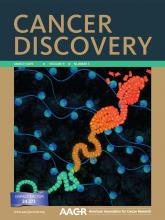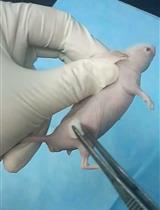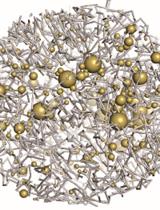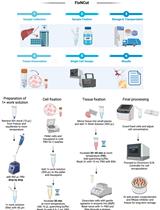- EN - English
- CN - 中文
Modeling NOTCH1 driven T-cell Acute Lymphoblastic Leukemia in Mice
NOTCH1诱导小鼠T细胞急性淋巴细胞白血病模型的建立
发布: 2020年05月20日第10卷第10期 DOI: 10.21769/BioProtoc.3620 浏览次数: 6708
评审: HongLok LungFarah HaqueAnonymous reviewer(s)
Abstract
T-cell acute lymphoblastic leukemia (T-ALL) is an aggressive hematological malignancy that arises from transformation of T-cell primed hematopoietic progenitors. Although T-ALL is a heterogenous and molecularly complex disease, more than 65% of T-ALL patients carry activating mutations in the NOTCH1 gene. The majority of T-ALL–associated NOTCH1 mutations either disrupt the negative regulatory region, allowing signal activation in the absence of ligand binding, or result in truncation of the C-terminal PEST domain involved in the termination of NOTCH1 signaling by proteasomal degradation. To date, retroviral transduction models have relied heavily on the overexpression of aggressively truncated variants of NOTCH1 (such as ICN1 or ΔE-NOTCH1), which result in supraphysiological levels of signaling activity and are rarely found in human T-ALL. The current protocol describes the method for mouse bone marrow isolation, hematopoietic stem and progenitor cell (HSC) enrichment, followed by retroviral transduction with an oncogenic mutant form of the NOTCH1 receptor (NOTCH1-L1601P-ΔP) that closely resembles the gain-of-function mutations most commonly found in patient samples. A hallmark of this forced expression of constitutively active NOTCH1 is a transient wave of extrathymic immature T-cell development, which precedes oncogenic transformation to T-ALL. Furthermore, this approach models leukemic transformation and progression in vivo by allowing for crosstalk between leukemia cells and the microenvironment, an aspect unaccounted for in cell-line based in vitro studies. Thus, the HSC transduction and transplantation model more faithfully recapitulates development of the human disease, providing a highly comprehensive and versatile tool for further in vivo and ex vivo functional studies.
Keywords: Mouse model (小鼠模型)Background
T-cell acute lymphoblastic leukemia (T-ALL) is an aggressive hematological tumor arising from the malignant transformation of hematopoietic progenitor cells primed towards T-cell development. T-ALL accounts for up to 15% of pediatric and 25% of adult ALL (acute lymphoblastic leukemia) and occurs more frequently in males than females (Goldberg et al., 2003). Despite being characterized by a high level of heterogeneity and molecular complexity (Liu et al., 2017), more than 65% of T-ALL patients carry gain-of-function mutations in the NOTCH1 gene (Weng et al., 2004). The resulting constitutive activation of NOTCH1 signaling is therefore the most prominent oncogenic pathway in T-cell transformation.
NOTCH1 proteins are developmentally conserved type I transmembrane receptors that play a prominent instructive role in T-cell lineage commitment and cell growth and proliferation during thymocyte development (Radtke et al., 1999; Defto and Bevan, 2000). NOTCH1 signaling is initiated upon binding of transmembrane ligands expressed on the surface of neighboring cells. This interaction prompts cleavage of the extracellular domain of the receptor by the ADAM10 metalloprotease followed by γ-secretase cleavage in the transmembrane domain of the receptor. Subsequent release from the membrane results in translocation of the intracellular domain (ICN1) to the nucleus and transcriptional activation of target genes (Kopan and Ilagan, 2009; Andersson et al., 2011). Finally, termination of NOTCH1 signaling is regulated by phosphorylation of the C-terminal PEST domain, which targets ICN1 for ubiquitination and FBXW7-mediated proteasomal degradation (O'Neil et al., 2007; Thompson et al., 2007). Constitutive activation of NOTCH1 in human T-ALL results from disruption of the mechanisms stringently regulating this multi-step process. The majority of T-ALL-associated mutations result either in disruption of the negative regulatory region, resulting in NOTCH1-signaling activation in the absence of ligand binding, or truncation of the C-terminal PEST domain which allows ICN1 to evade proteasomal degradation, thus impairing termination of signaling activity (Weng et al., 2004). In the past decade, the introduction of intensive combination chemotherapy approaches has increased the cure rate of pediatric T-ALL to nearly 90%. Nonetheless, the prognosis for patients with primary refractory or relapse T-ALL remains very poor (Goldberg et al., 2003; Litzow and Ferrando, 2015), underscoring the need to further decipher the molecular pathology underlying T-ALL transformation, identification of more specific therapeutic targets, and development of more effective and less toxic multi-drug therapies.
To date, in vitro human T-ALL-derived cell-line cultures remain the most commonly employed experimental approach to the study of T-ALL. Notably, this model does not correct for genetic drift associated with decade-long periods of culture and fails to account for the crosstalk between leukemia cells and the tumor microenvironment (Passaro et al., 2015; Pitt et al., 2015). Animal models therefore provide an alternative approach to functional studies that more accurately recapitulate human T-ALL in vivo. The mouse hematopoietic stem cell (HSC) retroviral transduction and transplantation model has been extensively applied to mimic initiation and progression of NOTCH1-driven T-ALL (Wendorff et al., 2010; Medyouf et al., 2011; Gachet et al., 2013). It has been shown that retroviral expression of ICN1 or ΔE-NOTCH1 (the extracellular domain-truncated form of the receptor) in murine bone marrow progenitors drives thymus-independent T-cell development and rapidly induces T-ALL development (Pear et al., 1996; Perez-Garcia et al., 2013). However, it should be noted that these aggressively truncated variants of NOTCH1, which result in supraphysiological levels of signaling activity, are rarely found in human T-ALL (Chiang et al., 2008). In fact, ΔE-NOTCH1 truncated alleles are expressed in only a small subset of patients carrying chromosomal translocations (1%) (Ellisen et al., 1991; Palomero et al., 2006). Much more commonly, human T-ALLs harbor acquired gain-of-function point mutations, which occur predominantly within the extracellular HD and the C-terminal PEST domains (Weng et al., 2004). Of note, 20% of T-ALL patients exhibit co-occurrence of these two mutation-driven activating mechanisms, which generate levels of activity well below those of ΔE-NOTCH1 (Chiang et al., 2008). As the outcome of NOTCH signaling is highly dose dependent in many developmental settings (Artavanis-Tsakonas et al., 1999; Bray, 2016), we hypothesized that the level of activity has a similar impact on the process of leukemogenesis. The current protocol describes the method for mouse hematopoietic stem cell (HSC) retroviral transduction with an oncogenic mutant NOTCH1 receptor (NOTCH1-L1601P-ΔP) that closely resembles the gain-of-function mutations found in patient samples. The L1601P-ΔP mutant contains a common HD point mutation (L1601P) that enables ligand-independent activation (Malecki et al., 2006), together with a frameshift mutation that results in truncation of amino acids 2,473-2,555, which comprise the negative regulatory PEST domain (ΔP). We outline the method for isolation of bone marrow cells from mice, enrichment for hematopoietic stem and progenitor cells, followed by retroviral transduction and transplantation into isogenic recipients (Figure 1). In this model, forced expression of constitutively active mutant NOTCH1 typically results in a wave of extrathymic T-cell lymphopoiesis 3 weeks after transplantation, which manifests as the transient appearance of GFP+ preleukemic CD4+ CD8+ double-positive (DP) immature T cells in peripheral blood (Figure 4). Transformation resulting in lethal leukemia progression occurs 12-15 weeks following transplantation (Wendorff et al., 2019) (Figure 4). When combined with constitutive- or inducible-knockout transgenic models, the protocol can be easily modified to address the role of candidate genes in NOTCH1-driven T-ALL transformation, tumor initiation and tumor progression (Wendorff et al., 2019). Furthermore, this approach provides a rapid and efficient model system for pre-clinical assessment of potential novel anti-leukemic drugs (Herranz et al., 2015; Sanchez-Martin et al., 2017).
Materials and Reagents
- Pipette tips
- Parafilm
- Kimwipes Delicate Task Wipers, 1-Ply (Kimberly-Clark Professional, catalog number: 06-666 )
- 150 mm TC-treated cell culture dishes (Corning, Falcon, catalog number: 353025 )
- 24-well TC-treated microplates (Corning, Falcon, catalog number: 353847 )
- 5 ml round-bottom polystyrene tubes (Corning, Falcon, catalog number: 352008 )
- 15 ml Conical bottom Centrifuge Tubes (Corning, Falcon, catalog number: 352196 )
- 50 ml Conical bottom Centrifuge Tubes (Corning, Falcon, catalog number: 352070 )
- 3 ml BD Luer-Lok tip Syringes (Becton Dickinson, catalog number: 309657 )
- 30 ml BD Luer-Lok tip Syringes (Becton Dickinson, catalog number: 302832 )
- Sterile 25 mm PES syringe filters, 0.45 µm pore size (Thermo Fischer Scientific, catalog number: 7252545 )
- 40 µm cell strainer (Corning, Falcon, catalog number: 352340 )
- 70 µm cell strainer (Thermo Fisher Scientific, catalog number: 22-363-548 )
- Amicon Ultra-15 Centrifugal 15 ml sample volume filter units NMWL 100KDa (EMD Millipore, catalog number: UFC910008 )
- U-100 Insulin syringes, 1 ml, 26 G (BD Biosciences, catalog number: 329652 )
- U-100 Insulin syringes, 0.5 ml, 29 G½ (Exelint international, catalog number: 26028 )
- Goldenrod Animal Lancet, 5 mm (Medipoint, catalog number: NC9891620 )
- LS Columns for negative cell selection (Miltenyi Biotec, catalog number: 130-042-401 )
- C57BL/6 bone marrow donor mice aged 6-12 weeks and isogenic C57BL/6 bone marrow recipient mice (min. 6 weeks of age) (The Jackson Laboratory, catalog number: 000 664 )
- 293T cells (ATCC, catalog number: CRL-3216 )
- pCL-Eco Retrovirus Packaging Vector (Addgene, catalog number: 12371 ) (Naviaux et al., 1996)
- pMSCV-NOTCH1-L1601P-ΔP (Chiang et al., 2008)
- jetPEI DNA Transfection Reagent provided with 150 mM NaCl solution (Polyplus, catalog number: 101-10N )
- PBS: Cell Culture Phosphate Buffered Saline (1x) without calcium and magnesium (Corning, catalog number: 21040CV )
- DMEM (Corning, catalog number: 10-013-CV )
- Opti-MEM I Reduced Serum Medium, GlutaMAX Supplement (Gibco, catalog number: 51985 )
- Fetal Bovine Serum (FBS), heat inactivated and sterile (Sigma-Aldrich, catalog number: F4135 )
- Penicillin (10,000 IU) and Streptomycin (10,000 µg/ml) in a 100-fold working concentration (Corning, catalog number: 30002CI )
- HEPES 1 M (Gibco, catalog number: 15630080 )
- 0.5 M EDTA (Lonza, catalog number 51201 )
- β-mercaptoethanol, 55 mM (Gibco, catalog number: 21985023 )
- Trypan blue (Gibco, catalog number: 15250061 )
- ACK Lysing Buffer (Quality Biologicals, catalog number: 118-156-721 )
- CD117 Microbeads, mouse (Miltenyi Biotec, catalog number: 130-091-224 )
- Lineage Cell Depletion Kit, mouse (Miltenyi Biotec, catalog number: 130-090-858 )
- Polybrene Infection/Transfection Reagent (EMD Millipore, catalog number: TR-1003-G )
- CountBright Absolute Counting Beads for flow cytometry (Invitrogen, catalog number: C36950 )
- Recombinant murine IL-3 (Peprotech, catalog number: 213-13 )
- Recombinant murine IL-6 (Peprotech, catalog number: 216-16 )
- Recombinant murine IL-7 (Peprotech, catalog number: 217-17 )
- Recombinant murine Flt3-L (Peprotech, catalog number: 250-31L )
- Recombinant murine SCF (Peprotech, catalog number: 250-03 )
- Recombinant murine TPO (Peprotech, catalog number: 315-14 )
- Anti-mouse Sca-1 (Ly-6A/E) monoclonal antibody (clone D7), PE-Cyanine7 conjugate (eBioscience, catalog number: 25-5981 )
- (Optional) Anti-mouse CD4 monoclonal antibody (clone RM4-5), APC-conjugate (BD Biosciences, catalog number: 561091 )
- (Optional) Anti-mouse CD8 monoclonal antibody (clone 53-6.7), PE-Cyanine7 conjugate (BD Biosciences, catalog number: 561097 )
- DAPI (4',6-Diamidino-2-Phenylindole, Dilactate) (Invitrogen, catalog number: D3571 )
- Heparin, 1,000 USP units/ml (Sagent Pharmaceuticals, catalog number: 25021-400-30 )
- Ketamine HCl injection (100 mg/ml: controlled substance); consult institution’s veterinarian
- Xylazine sterile solution (20 mg/ml: AKORN Animal Health; catalog number: 139-236 ); consult institution’s veterinarian
- Staining medium (SM; see Recipes)
- 293T culture/transfection medium (see Recipes)
- Growth-factor supplemented transduction medium (see Recipes)
- Ketamine/xylazine anesthesia cocktail (see Recipes)
Equipment
- 1 ml/200 µl/20 µl pipettes
- Mortar and pestle
- A cell culture incubator, 37 °C/5% CO2
- Dissection tools: scissors, forceps, scalpel blade (recommended source: Fine Science Tools www.finescience.com)
- Hemocytometer (recommended) or automated cell counter
- Laminar flow biosafety cabinet
- Refrigerated centrifuge fitted with a swing-bucket rotor and plate adapters
- MACS MultiStand (Miltenyi Biotec, catalog number: 130-042-303 )
- MidiMACS Separator (Miltenyi Biotec, catalog number: 130-042-302 )
- A Fluorescence Microscope with green fluorescent protein (GFP) excitation/emission filters
- A Flow Cytometer instrument with a Blue (488 nm), Violet (405 nm), Green (561 nm) and Red (633 nm) laser (recommended: LSRFortessa, BD Biosciences)
- A gamma-source or alternative small-animal irradiator
Software
- FlowJo (FlowJo LLC, Ashland, OR, USA)
- GraphPad Prism Software (La Jolla California USA, www.graphpad.com)
Procedure
文章信息
版权信息
© 2020 The Authors; exclusive licensee Bio-protocol LLC.
如何引用
Wendorff, A. A. and Ferrando, A. A. (2020). Modeling NOTCH1 driven T-cell Acute Lymphoblastic Leukemia in Mice. Bio-protocol 10(10): e3620. DOI: 10.21769/BioProtoc.3620.
分类
癌症生物学 > 癌症干细胞 > 动物模型 > 细胞侵袭
癌症生物学 > 瘤形成 > 白血病生成
分子生物学 > DNA > DNA 测序
您对这篇实验方法有问题吗?
在此处发布您的问题,我们将邀请本文作者来回答。同时,我们会将您的问题发布到Bio-protocol Exchange,以便寻求社区成员的帮助。
Share
Bluesky
X
Copy link












